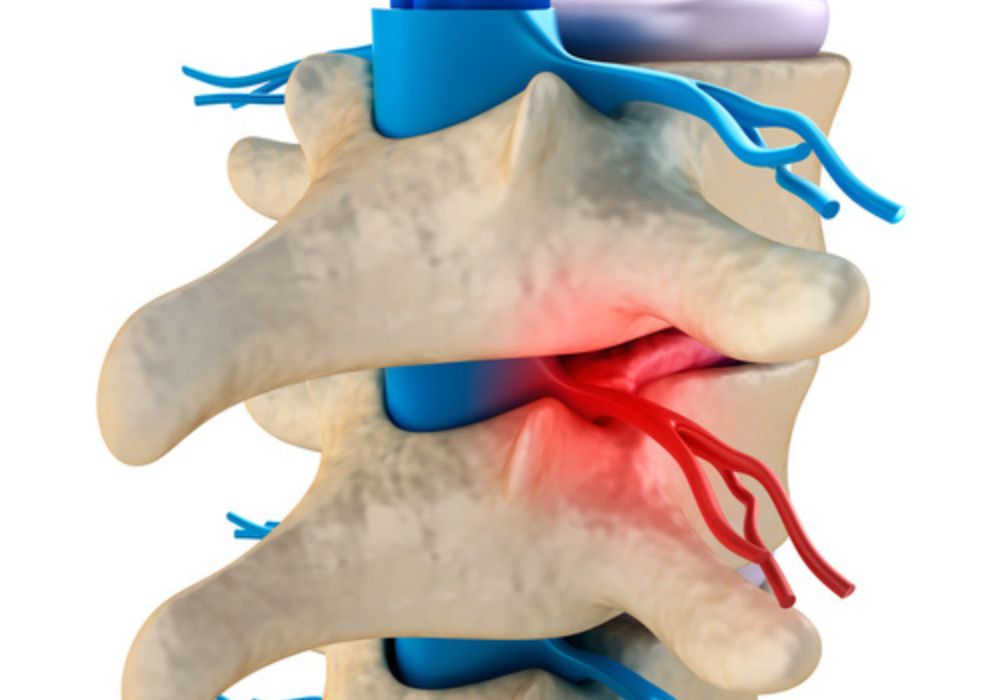Chiropractor for Disc Bulge
Start chiropractic care today. Request your X2 free consultations by phoning the clinic, or clicking the button below.
- Address the cause of your disc pain
- Receive gentle yet targeting treatment
- Health funds accepted
- 2 free consultations

Enquire Today
Please call The Back Clinic today to confirm your appointment, or click on the button below.
Bankstown: Suite 6, 434 Chapel Rd, Bankstown NSW 2200 (open in Google Maps).
Phone Bankstown: 02 9708 6011
Rockdale: Shop 4/18 Market St, Rockdale 2216
Phone Rockdale: 02 9592 1282
FIND OUT MORE ABOUT CHIROPRACTIC CARE FOR BULGING DISCS
Bulging or herniated discs are more common than you think. In fact, numerous individuals who experience pain and dysfunction have a bulging or herniated disc, but many don’t know it.
Discs are an important part of the body as they help to separate the bones of the spine (vertebrae). That’s why an injury to this area can cause significant mobility issues. The good news is that many disc injuries can be treated. So, let’s look at the types of disc problems, symptoms, and treatment options.
WHAT IS A DISC?
The term disc is short for intervertebral disc. In a nutshell, discs are actually spongy cushions that separate the bones within the spine (vertebrae). Discs help to absorb shock, keep the spine stable, and also gives the vertebrae ‘pivot points’ which allow movement.
The disc is made up of two parts – an outer tougher portion that’s known as the annulus fibrosis and an inner jelly-like substance known as the nucleus pulposus.
TYPES OF DISC PROBLEMS
Some of the most common disc-related problems include:
- Disc strains and sprains
- Protruded discs (also known as ‘herniated’ or ‘prolapsed’ discs)
- Disc bulge
DISC STRAINS AND SPRAINS
Just like any other part of the body, a disc strain or sprain is caused by either an excessive or sustained load to the discs. While this may not show on x-rays or scans, it can cause irritation and inflammation.
DISC PROTRUSION
A common misconception of disc protrusion is that the disc has moved out of position. This is not the case, however, as discs are held firmly in place by the vertebrae, ligaments and muscles. Instead, with a disc protrusion, a small area in the tough outer disc shell weakens, allowing the softer jelly-like contents to ooze out. When this softer jelly-like substance comes into contact with the other structures, it can cause:
- Altered nerve function, also known as numbness or pins-and-needles
- Referred nerve pain, also known as pain that radiates into the lower limbs
The most common site where a disc protrusion occurs is the lower back.
DISC BULGE
A disc bulge typically occurs over time as our discs dehydrate and our cartilage stiffens as we get older. These changes can cause the outer layer of the disc to bulge out – similar to a hamburger that looks a little too large for its bun. With a bulging disc, however, it may not affect the entire perimeter, but it does affect a portion of it. Unlike a disc protrusion, however, it only affects the tougher outer layer of the disc but not the softer inner layer.
SYMPTOMS OF DISC PROBLEMS
The symptoms that an individual experiences can differ depending on the location and severity of the disc problem. Some general symptoms, however, may include:
- General back pain
- Increased back pain when bending or sitting for extended periods of time
- Increased back pain when laughing, sneezing or coughing
- Pain, numbness or pins-and-needles around the arm and leg area.
THE MOST COMMON SITE FOR DISC PROBLEMS
The most common site for a disc bulge is where the lumbar and sacrum meet – also known as the L5 S1 disc bulge as well as the disc above it, L4 L5. These two areas account for majority of disc bulges and herniations for individuals between 25 and 55 years of age. Other common disc bulges include:
- L3 L4
- L5 S1
- L3-L4-L5
While you can also get disc bulges in the neck, the most common area is the lower back region.
BULGING DISC IN THE NECK
A bulging disc in the neck can range in pain severity from being relatively painless to causing severe pain in your shoulders, chest and arms.
Fortunately, there are several ways to treat a bulging disc including:
- Chiropractors who can help to safely move the disc and relieve pressure and pain
- Rest and medication
- Nonsteroidal anti-inflammatory drugs (NSAIDs) such as ibuprofen
- Physical therapy can help with relieving pressure on the nerve
- Cortisone injections
- Various surgical procedures depending on the severity of the disc bulge
SEEK A CHIROPRACTOR FOR BULGING DISC ASSESSMENT AND TREATMENT
Do you have some questions about chiropractic and bulging discs? Reach out to your team at The Back Clinic and book a chiropractor today.
We invite you to start chiropractic today by booking your first two consultations now. Your consultation is a great opportunity to discuss your health needs and to ask your questions.